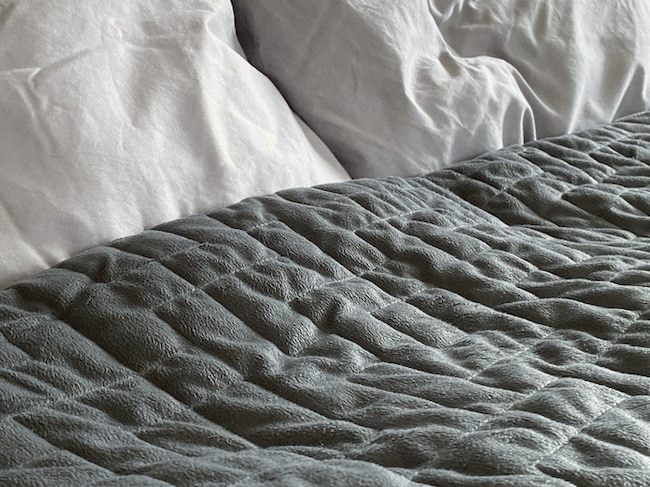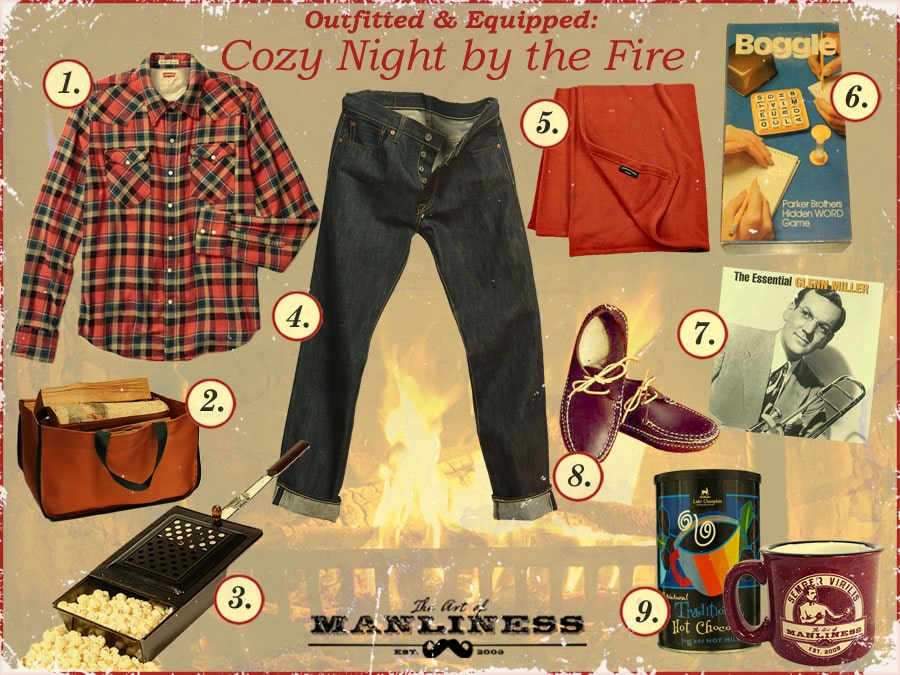
Weighted blankets hit the mainstream nearly a decade ago when the Gravity Blanket launched its Kickstarter campaign. Usually weighing from 10-25 pounds, the pressure from these blankets is supposed to reduce anxiety and help you sleep better. It’s like being in the womb! Like getting a hug! While I was admittedly curious about weighted blankets at the time, I wondered if it was just another gimmick and didn’t follow through on trying one out.
Flash forward to the present day, and as a middle-aged man who struggles to get good sleep, I’m open to experimenting with all kinds of sleep “tech” — gimmicks or not. And I recently pulled the trigger on buying myself a weighted blanket.
Well, as it turns out, I actually don’t like sleeping with it at night. It was just too hot, heavy, and constricting to be comfortable using all night long. But that doesn’t mean I’ve written the weighted blanket off entirely. I have found it quite useful for two things:
Falling back to sleep in the morning when I wake up too early. Sometimes I wake up a couple hours before I intend to, and I can’t fall back asleep. I’ve found that when I wake up early, if I put the weighted blanket over me, it helps me return to sleep a lot more readily.
Taking a nap. I’ve really wanted to embrace the nap more to compensate for getting less robust sleep at night. But despite the fact that I get tired during the day, sometimes when I lie down, I can’t fall asleep (that I drink caffeine during the day doesn’t help; though note that I cut off the caffeine early, so, no, that’s not the cause of my nighttime sleep struggles; rest assured, dear reader, that I have very good sleep hygiene — I do all the recommended things!). However, using the weighted blanket during naps helps me fall asleep faster and more reliably. It’s really improved my naps.
While I’m not a nighttime user of the weighted blanket, these two uses have turned me into a big appreciator of them.
If you want to try out a weighted blanket for yourself, here are a few tips for getting one:
Match blanket weight to body weight. It’s typically recommended that you aim for a blanket that’s about 10% of your body weight. I’m about 200 pounds, so I got a 20-lb blanket. Too heavy can be uncomfortable, too light won’t offer the calming pressure you’re after. You’ll also hear anecdotally from users, though, that you should get a blanket that’s as heavy as you can comfortably bear, so if you’re between weights (they typically come in 10, 15, and 20 lb. increments) go higher instead of lower — especially if you’re just going to be using it for naps rather than all night.
Choose a breathable fabric. Weighted blankets are heavy by design and can trap heat. To avoid feeling overheated, pick one with an exterior fabric made with natural, breathable materials like cotton or bamboo. You’ll sleep cooler and more comfortably.
Look for even weight distribution. The filler beads on cheaper blankets are sometimes unevenly spaced, which ruins the effect. Choose a blanket with small, evenly stitched pockets — around 4 to 6 inches each — for consistent pressure across your body.
Think about washability. Some weighted blankets, like the Gravity, have removable covers for washing — but getting them on and off looks like kind of a pain. Other blankets can be entirely washed in your washing machine. I got the latter; though I’m a little worried that a 20-lb blanket might wreck my washing machine, which is a top loader with an agitator pole. I haven’t tried it yet. If you’re concerned about that, get a blanket that comes with a cover, or buy a separate cover that will fit it.
Consider blanket size. Weighted blankets aren’t meant to drape over the edges of your bed. They should fit your body, not your mattress. (This means you can use one just on yourself, without dragging your partner into it.) A blanket that’s too big can hang off your mattress, disrupting the distribution of weight and decreasing the proper pressure on your body. So when your blanket arrives and it doesn’t cover your mattress, don’t think there’s been a mistake; that’s how it’s supposed to be.
I spent time looking at a bunch of different models of weighted blankets, which ranged in price from $30 to $250, and honestly, they didn’t seem to be all that different from each other. I settled on this mid-priced one and have been happy with it.
Even if sleeping under a weighted blanket all night isn’t your thing, consider keeping one around for other uses; deploying it for strategic snoozes might make it worth its weight.







